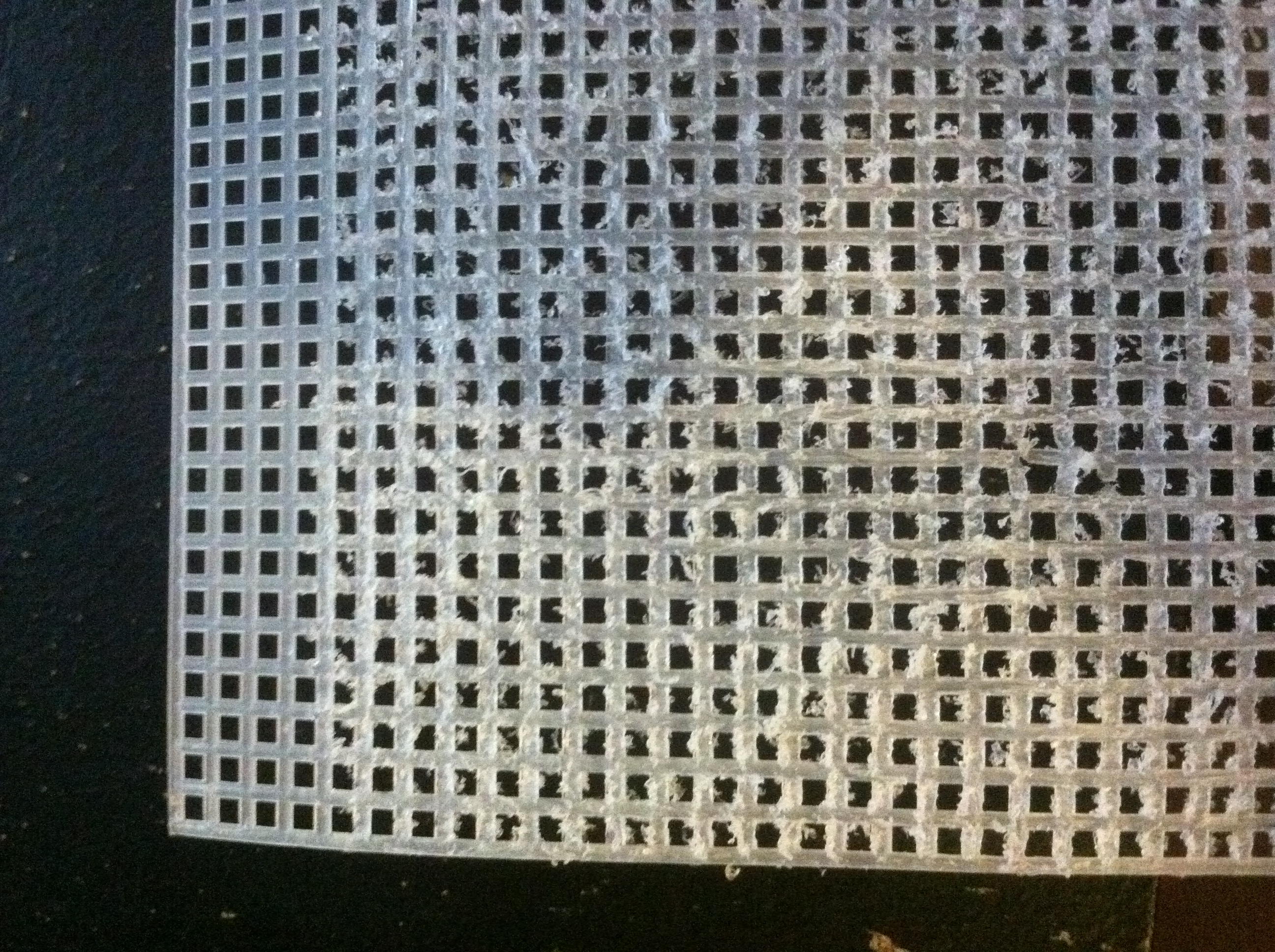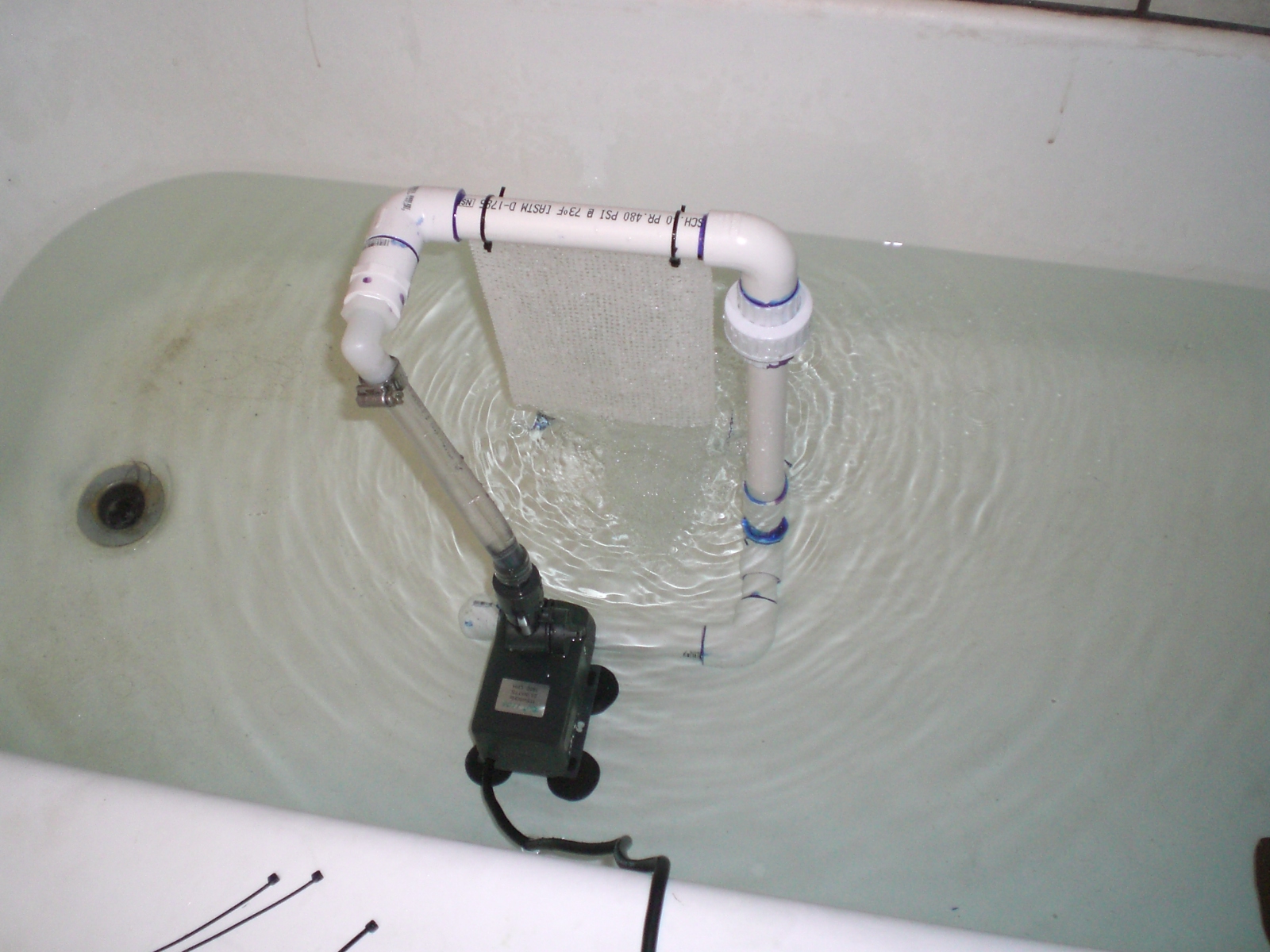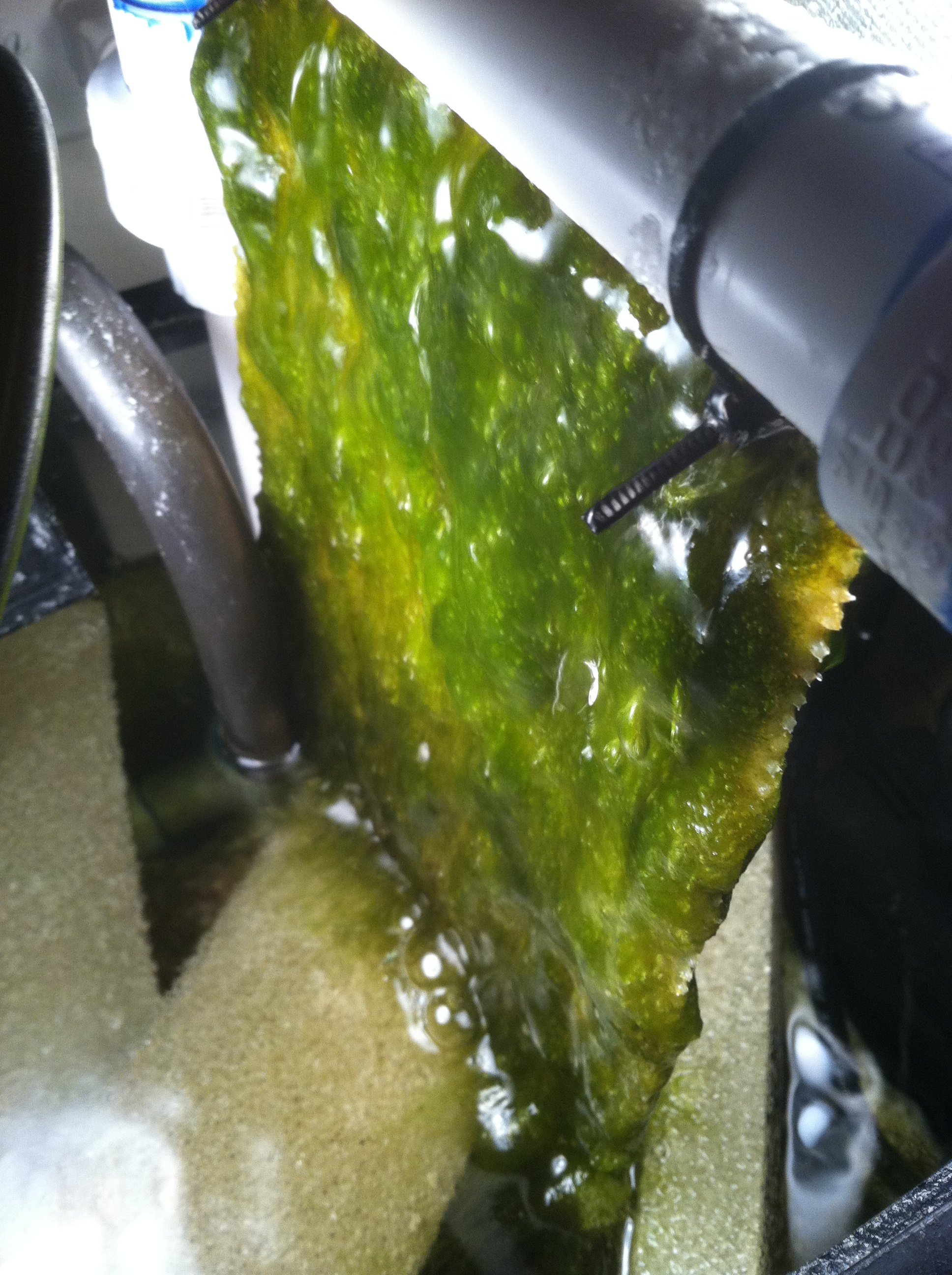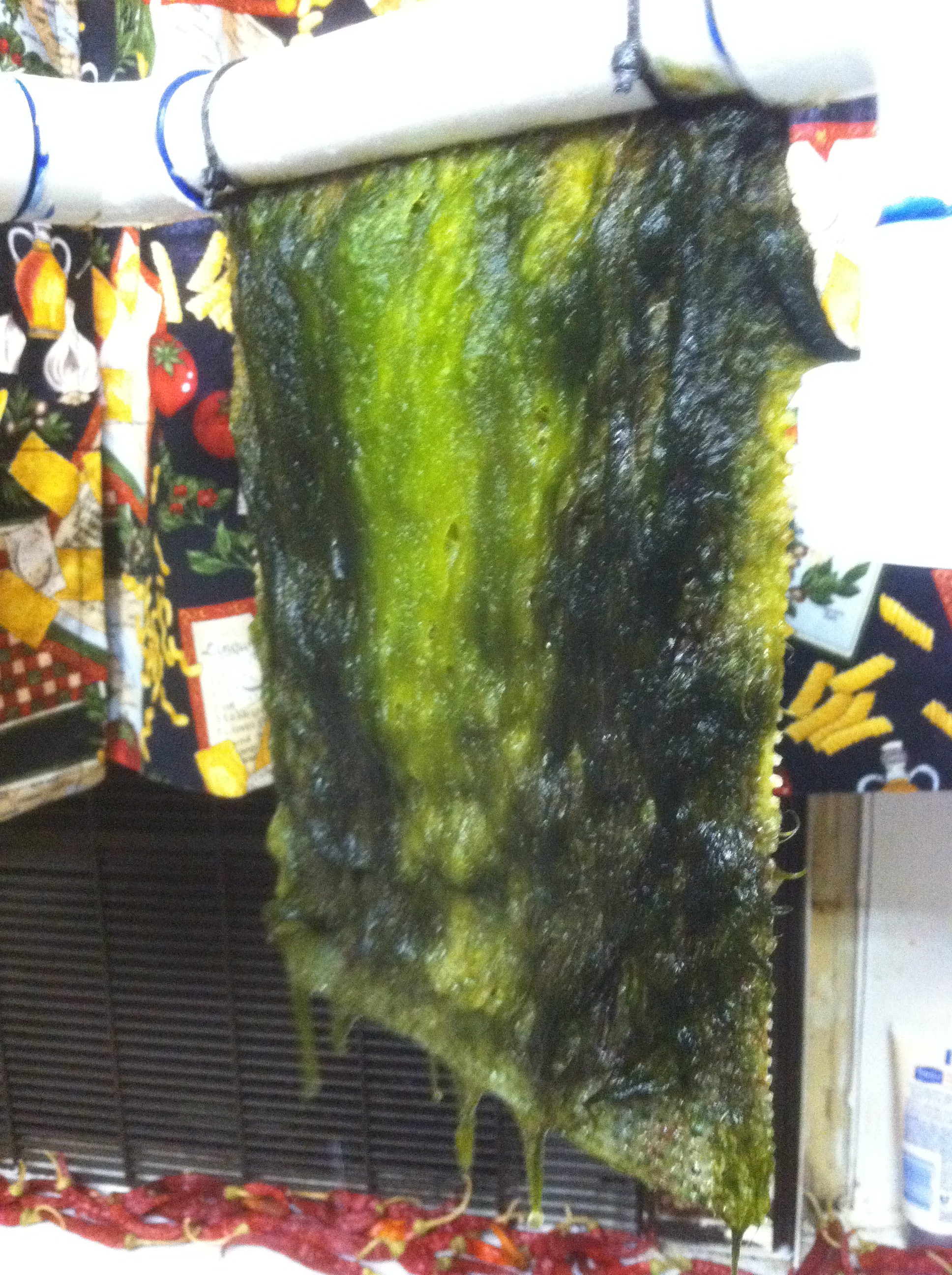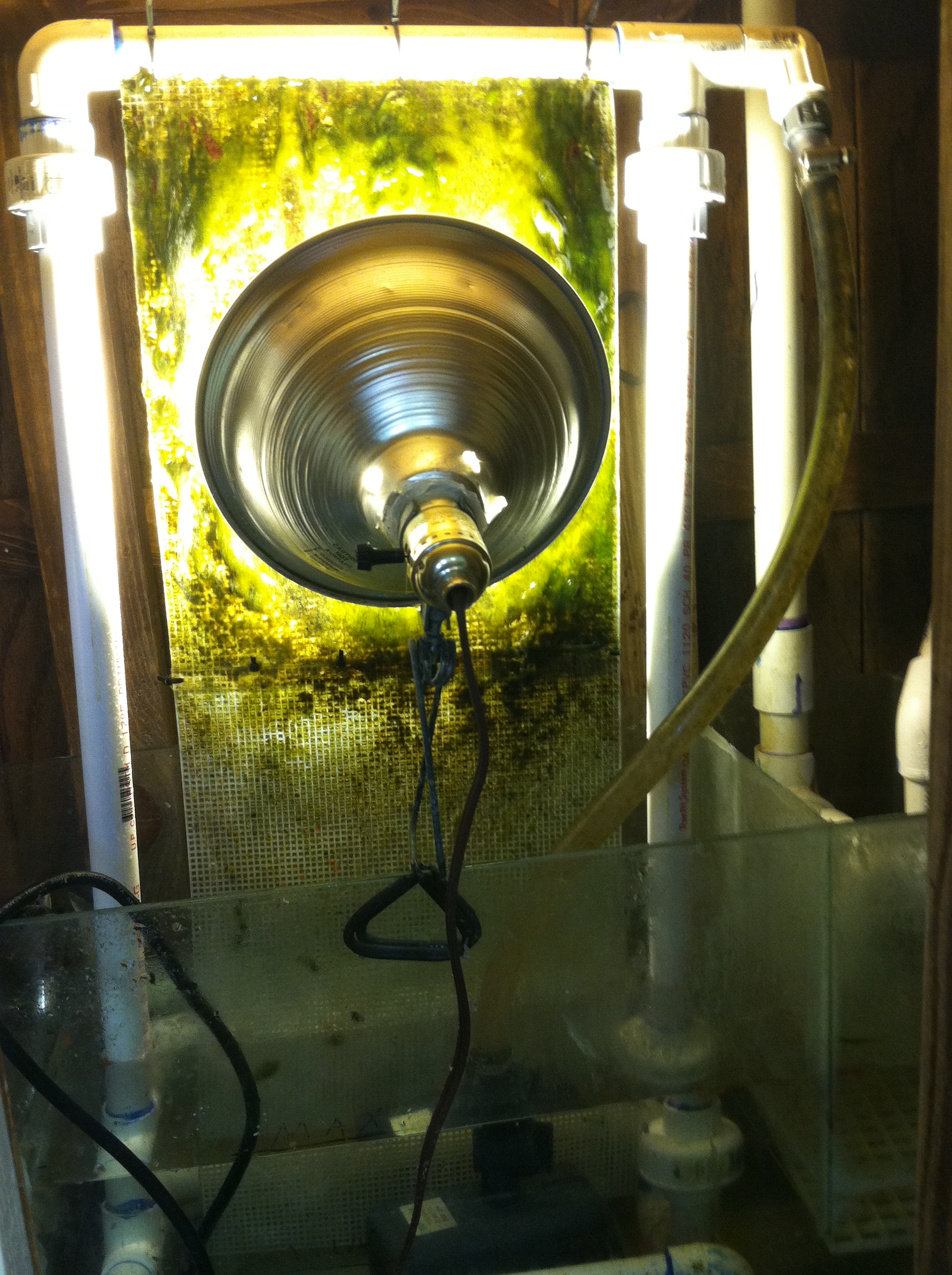snakeblitz33
Well-Known Member
Snake's Methods for Algae Scrubber Basics
Algae scrubbers are not new to the aquarium trade. They have been used at least since the 1970s as a form of waste control in commercial aquarium applications. Algae scrubbers use nitrate, phosphate and iron to grow algae on a screen. Typically, the best type of algae to grow is the most hated of all algaes in a saltwater aquarium – hair algae. Hair algae grows quicker than any other algae, and it can uptake the most nutrients out of the water in the shortest period of time. Because of the volume and speed of the water flowing over the screen, and the lights being so close to it, it creates the perfect environment for hair algae to grow. You want this growth because the hair algae will use all the nitrate and phosphate out of the water column in order to maintain growth. The hair algae on the screen will even out-compete any macroalgae in your tank for nutrients.
Algae has the ability to soak up heavy metals, ammonia, contaminates, and other toxins out of the water column, by fixing it into their tissues. It actually requires some iron in the water column in order to grow and reproduce. Tanks with low levels of iron have poor algal growth, even if those refugiums have macro algae, a tank should still be dosed with iron to keep macro algae and algae scrubber screens growing green.
Algae scrubbers also supersaturate the water column with oxygen by a natural means of stripping the water column of Carbon Dioxide and through photosynthesis, produces oxygen that is released into the water column. It's the absolute most natural way of putting oxygen into the water. Because algae scrubbers are essentially vertical refugiums, because of their process of removing waste material and putting oxygen in the water, they constantly balance and stabilize the aquariums pH.
Another benefit of adding an algae scrubber is that it produces millions of seven day old copepods every week! Copepods fill the screen and start eating the underlaying layers of algae on the screen. Believe it or not, it's so many copepods that they become pests! To wash off some of the copepods before you clean your screen, gently dip and shake the screen in your sump to release some of the copepods back into your tank.
There are a few guidelines that you must follow when starting an algae scrubber.
[*]
For every 1” of horizontal screen width, you need 35gph of real flow.
[*]
1” of screen lit on both sides can handle the bioload of 1 gallon of aquarium water. Horizontal screens must have four times the surface area and twice the amount of light in order to grow successfully.
The screen must dip into the water 1/2” to keep noise and splash down to a minimum.
For every 6” of screen, there should be 23w of real light on the screen.
[*]
CFL lights should be no further away than 4” from the screen. T5 lights, no further than 1 1/2” from the screen.
[*]
A hair algae screen must be cleaned every 7 days. A dark red screen / cyano should be cleaned every three days or sooner. Eventually, your screen should be filled with a nice bright green hair algae growth.
Only half of the screen (one side) is cleaned every 7 days in the sink, and freshwater has to be ran over the entire screen at that time. This kills off any copepods that is eating the underlaying algae. Freshwater will not kill hair algae. It is unnecessary to wash it with RO water.
Of course, this guideline is subject to change, and will change over time. Different growth patterns mean different things. Dark red algae growth should be cleaned off the screen every three days. Dark green hair algae should be cleaned off every five days and bright green hair algae should be cleaned off the screen every seven days. If you are getting dark green and red growth on the screen, your water quality is very poor and it will take some time for the scrubber to start improving your water quality. Stick with it, and it will eventually clean everything up.
If you have a problem with hair algae in your display tank, and you are using an algae scrubber, you have three options: You can wait and let the screen start to grow and out compete the hair algae in the display tank, which it will over time. Second, you can start to pull some of the hair algae out of your display tank by hand, and that will assist your scrubber in picking up the pace. Thirdly, you can overfeed your fish! By creating some extra nitrate and phosphate in your system, the scrubber will start growing it quicker than the algae in your display tank, and will eventually out compete it. You also have the option of turning your lights down or off for a little while so the hair algae in the display tank can weaken and be removed by the algae scrubber. This is talked about in detail in Snake's Methods for Hair Algae Removal.
My personal algae scrubber:
I have an algae scrubber running on my 20g nano tank that I started with tap water. I installed the scrubber at the same time I started my tank. The scrubber took about two weeks to get really well seeded. At the same time my algae scrubber was getting seeded, hair algae started to break out in my display tank. I knew this was going to happen, and I wasn't worried about it. I turned the lights down to three hours a day for two weeks and let my algae scrubber run rampant. I cleaned the entire screen off four times in two weeks. When I started my tank, my water parameters were as follows:
Nitrate: 40ppm
Phosphate: 2.0ppm
Ammonia 1.0ppm
Calcium: 440ppm
Alkalinity: 10dKh
After two weeks and four cleanings:
Nitrate: 20ppm
Phosphate: 1.0ppm
Ammonia 0.0ppm
Calcium: 440ppm
Alkalinity: 10dKh
After a month and a half since I started my tank with more cleanings:
Nitrate: 0.0ppm
Phosphate: 0.025ppm
Ammonia: 0.0ppm
Calcium: 440ppm
Alkalinity: 10dKh
I have not done a single water change on this aquarium since I started it 7-1-11. Water parameters are still as follows:
Nitrate: 0.0ppm
Phosphate: undetectable
Ammonia: 0.0ppm
Calcium: 440ppm
Alkalinity: 10dKh
My personal algae scrubber has a 6x8” screen, lit on both sides, which can handle a bioload for a 48g aquarium. It fits in the 10g sump, underneath my 20g nano. I still have room for a Tunze Nano Skimmer if I want to add one. I have witnessed first hand what algae scrubbers can do for a tank. I'm really excited to share my results with everyone. I highly recommend algae scrubbers for everyone's tank.
Algae scrubbers are not new to the aquarium trade. They have been used at least since the 1970s as a form of waste control in commercial aquarium applications. Algae scrubbers use nitrate, phosphate and iron to grow algae on a screen. Typically, the best type of algae to grow is the most hated of all algaes in a saltwater aquarium – hair algae. Hair algae grows quicker than any other algae, and it can uptake the most nutrients out of the water in the shortest period of time. Because of the volume and speed of the water flowing over the screen, and the lights being so close to it, it creates the perfect environment for hair algae to grow. You want this growth because the hair algae will use all the nitrate and phosphate out of the water column in order to maintain growth. The hair algae on the screen will even out-compete any macroalgae in your tank for nutrients.
Algae has the ability to soak up heavy metals, ammonia, contaminates, and other toxins out of the water column, by fixing it into their tissues. It actually requires some iron in the water column in order to grow and reproduce. Tanks with low levels of iron have poor algal growth, even if those refugiums have macro algae, a tank should still be dosed with iron to keep macro algae and algae scrubber screens growing green.
Algae scrubbers also supersaturate the water column with oxygen by a natural means of stripping the water column of Carbon Dioxide and through photosynthesis, produces oxygen that is released into the water column. It's the absolute most natural way of putting oxygen into the water. Because algae scrubbers are essentially vertical refugiums, because of their process of removing waste material and putting oxygen in the water, they constantly balance and stabilize the aquariums pH.
Another benefit of adding an algae scrubber is that it produces millions of seven day old copepods every week! Copepods fill the screen and start eating the underlaying layers of algae on the screen. Believe it or not, it's so many copepods that they become pests! To wash off some of the copepods before you clean your screen, gently dip and shake the screen in your sump to release some of the copepods back into your tank.
There are a few guidelines that you must follow when starting an algae scrubber.
[*]
For every 1” of horizontal screen width, you need 35gph of real flow.
[*]
1” of screen lit on both sides can handle the bioload of 1 gallon of aquarium water. Horizontal screens must have four times the surface area and twice the amount of light in order to grow successfully.
The screen must dip into the water 1/2” to keep noise and splash down to a minimum.
For every 6” of screen, there should be 23w of real light on the screen.
[*]
CFL lights should be no further away than 4” from the screen. T5 lights, no further than 1 1/2” from the screen.
[*]
A hair algae screen must be cleaned every 7 days. A dark red screen / cyano should be cleaned every three days or sooner. Eventually, your screen should be filled with a nice bright green hair algae growth.
Only half of the screen (one side) is cleaned every 7 days in the sink, and freshwater has to be ran over the entire screen at that time. This kills off any copepods that is eating the underlaying algae. Freshwater will not kill hair algae. It is unnecessary to wash it with RO water.
Of course, this guideline is subject to change, and will change over time. Different growth patterns mean different things. Dark red algae growth should be cleaned off the screen every three days. Dark green hair algae should be cleaned off every five days and bright green hair algae should be cleaned off the screen every seven days. If you are getting dark green and red growth on the screen, your water quality is very poor and it will take some time for the scrubber to start improving your water quality. Stick with it, and it will eventually clean everything up.
If you have a problem with hair algae in your display tank, and you are using an algae scrubber, you have three options: You can wait and let the screen start to grow and out compete the hair algae in the display tank, which it will over time. Second, you can start to pull some of the hair algae out of your display tank by hand, and that will assist your scrubber in picking up the pace. Thirdly, you can overfeed your fish! By creating some extra nitrate and phosphate in your system, the scrubber will start growing it quicker than the algae in your display tank, and will eventually out compete it. You also have the option of turning your lights down or off for a little while so the hair algae in the display tank can weaken and be removed by the algae scrubber. This is talked about in detail in Snake's Methods for Hair Algae Removal.
My personal algae scrubber:
I have an algae scrubber running on my 20g nano tank that I started with tap water. I installed the scrubber at the same time I started my tank. The scrubber took about two weeks to get really well seeded. At the same time my algae scrubber was getting seeded, hair algae started to break out in my display tank. I knew this was going to happen, and I wasn't worried about it. I turned the lights down to three hours a day for two weeks and let my algae scrubber run rampant. I cleaned the entire screen off four times in two weeks. When I started my tank, my water parameters were as follows:
Nitrate: 40ppm
Phosphate: 2.0ppm
Ammonia 1.0ppm
Calcium: 440ppm
Alkalinity: 10dKh
After two weeks and four cleanings:
Nitrate: 20ppm
Phosphate: 1.0ppm
Ammonia 0.0ppm
Calcium: 440ppm
Alkalinity: 10dKh
After a month and a half since I started my tank with more cleanings:
Nitrate: 0.0ppm
Phosphate: 0.025ppm
Ammonia: 0.0ppm
Calcium: 440ppm
Alkalinity: 10dKh
I have not done a single water change on this aquarium since I started it 7-1-11. Water parameters are still as follows:
Nitrate: 0.0ppm
Phosphate: undetectable
Ammonia: 0.0ppm
Calcium: 440ppm
Alkalinity: 10dKh
My personal algae scrubber has a 6x8” screen, lit on both sides, which can handle a bioload for a 48g aquarium. It fits in the 10g sump, underneath my 20g nano. I still have room for a Tunze Nano Skimmer if I want to add one. I have witnessed first hand what algae scrubbers can do for a tank. I'm really excited to share my results with everyone. I highly recommend algae scrubbers for everyone's tank.

